26 Experts Share Ideas on 2018 Packing Trends and Sustainable Packaging
Date: March, 2018 | Category: Proofreading | Author: Marvin Magasura
For years, the shift towards sustainability has been top of mind in the packaging industry. To keep up, businesses have had to adapt at an incredible rate to please a more educated and savvy consumer. Staying on top of the trends and changes can be a tough task on its own, so we asked experts in the packaging world to forecast where the industry is going.
We asked 26 experts from every corner of the industry to weigh in on:
- What packaging trends do you see becoming more prominent in 2018, whether it be in innovation, design, or consumers’ perspective?
- Sustainable packaging will carry on to be one of the biggest trends in 2018 – how do you see companies and brands tackling this?
So refill your coffee, get comfortable, and start scrolling on the packaging trends for 2018. You can also skip to your favorite expert using these links:
1. Sarah Shumpert | 2. Konrad Kwiatkowski | 3. Andreas Kioroglou | 4. Diana Fryc | 5. Maud Paulin-Harris | 6. Jackie Irvine | 7. Narash Khanna | 8. Mark Velarga | 9. Rajesh Bhatia | 10. Brett Goldhawk | 11. Marissa Puttagio | 12 Nigel Ritchie | 13. Helen Barlow | 14. Drew Davies | 15. Mat Bogust | 16. Vicki O’Toole | 17 James Thomas | 18. Ian Segail | 19. Suzanne Ballard | 20. Stephanie Kiens | 21. Fred Hart | 22. Danielle Townsend | 23. Yael Miller | 24. Jessie Vickery | 25. Alycia Moffatt | 26. Jonathan Hou


Sara Shumpert
Managing Director at The Packaging School
Sustainable packaging is no longer a trend
As we transition from the shelf to the doorstep – E-commerce or direct-to-consumer- it requires a rethinking of both product and package design. Whereas packaging for retail must command a purchase-worthy first impression, packaging for e-commerce needs to be equipped for the distribution environment, meaning it’s lightweight and durable.
Sustainable packaging is no longer a trend but an expectation of consumers. We see companies tackling sustainability in more innovative ways than just lightweight materials. Packaging innovations that increase food freshness and conserve ingredient fortification will improve in 2018.
LinkedIn | Twitter | Facebook | Company website


Konrad Kwiatkowski
Marketing Manager at Packhelp
An eco-friendly trend, that favors creativity
To start with, the packaging industry is rapidly changing. A few years back, we witnessed a boom in plastic bags, and now they are becoming a fading memory.
Probably the most important trend in 2018 will be connected with the stronger emphasis put on sustainability. We can expect that more packaging providers will turn to eco-friendly products, but most importantly, those changes will be pushed by customers. Bigger companies – like McDonald’s or Iceland most recently – might feel the need to implement new, more environmental strategies to satisfy their clients. Packaging providers, on the other hand, might be expected to service returns of used boxes as a part of their offer. That would mean a considerable change for the industry.
Other than that, we believe at Packhelp that upcycling will become more popular this year. It is also an eco-friendly trend that favors the creativity of the customers. Following this, more companies should learn that packaging is their kind of business card that they leave in their customers’ hands. Hence, packaging will become more “shareable” social-wise too. Boxes are turning into everyday-use objects – we should expect that on a much bigger scale in 2018.
Since there is so much love for video content, maybe packaging will need to adapt? It is possible that packaging will see the first steps to become more interactive, as to enrich the experience with the product. To strengthen that experience, companies will probably make more use of personalization in packaging too. Combining it with creativity is what customers should (and probably will) expect.
As pointed out in the first question, sustainability will be the most prominent trend in the packaging industry to be seen in 2018. And companies will tackle that in many ways.
Zara – the clothing brand of Inditex – has turned their change to recyclable boxes into a marketing slogan “Our boxes are made of boxes with a past.” Their boxes are cardboard ones, made from recycled materials. Iceland – the British chain of supermarkets – has taken a step to become a pioneer and withdraw from using plastic in any of its own-label products. McDonald’s has also announced changes in their packaging policy, while more and more small companies switch to cardboard solutions. In general, we see this switch to sustainability as we speak.
Furthermore, more emphasis will be put on creating boxes that could be reused or returned for recycling. It will either become “a must” in the packaging industry or allow for the creation of new companies that would deal with collecting packaging. Another solution to that could be discounts offered to clients that will return the boxes to shops.
LinkedIn | Twitter | Facebook | Company website


Andreas Kioroglou
CEO/Creative Director at Matador Design
We are facing the results of climate change
Smart packaging, personalized packaging, packaging design for online shopping, and first and foremost, the design of more sustainable packaging [are trends we see].
We are facing the results of climate change that affects everyone around the world. Packaging is a polluting factor that contributes to this change. In 2018, the central stage will take the creative design that will take into account besides the use of more sustainable materials, factors like the reduction of the carbon footprint of packaged goods throughout the supply chain, and designs that will extend the packaging life cycle. A good example that takes all the above into account is Viupax which is cost-efficient and more sustainable than traditional shoe boxes as it uses less cardboard and requires significantly less volume during transportation.
Twitter | Facebook | Company website
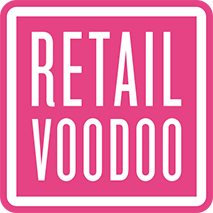

Diana Fryc
Director of Operations at Retail Voodoo
An eco-friendly trend, that favors the creativity of the customers
While Retail Voodoo sees lots of trends, the one request we get with great consistency, (outside of using less material) is related to compostable packaging. We work with a lot of brands that are concerned with reducing their footprint. Right now, the issue with compostable packaging is the CPU and the quality consistency between manufacturers. We anticipate the CPU decreasing as demand and efficiencies continue to increase (just like the use of recycled materials in the early 2000s). Whichever manufacturer gets this right is going to win in a big way.
Aside from compostable packaging, there is still a strong desire to reduce the size of packages, a continued desire to use fewer adhesives, and the continued use of post-consumer recycled material. Lighter materials to save on shipping costs, and form factors that maximize shelf space and square-ish bottles, will also continue. I feel the form factor push is being driven by retailers like Costco that are encouraging manufacturers to maximize space. More product in a box, less warehouse storage space (as an aggregate). Additionally, consumers don’t like getting packages half full and are now considered wasteful. This may be a more significant conversation around modernizing packaging machines for in-line product filling, as much as a package form design.
On the design side, we continue to see the simplicity and the use of fold floods of color and are intrigued by the increase in the use of illustration on product packaging targeting adults (more traditional for children-oriented products).
Lastly – we have noticed traditionally male-centric brands acknowledging women in their brands and packaging. Examples would include outdoor retailers like REI, to beer brands like “Budweiser.”
LinkedIn | Twitter | Facebook | Company website


Maud Paulin-Harris
Emotive Studio Hong Kong
Overall wrapping is now reflecting the consumer trend
Definitely, environmental concerns have become a key factor alongside budget for packaging design, but we see two very different trends in fact.
One is driven by the ‘unboxing’ experience of the e-commerce channel. Clients are requesting a “wow” factor. This means a minimalist design on the outside but more textured papers, protective wrapping, pull-out tabs, and personalized cards on the inside.
Contrast, designing for on-shelf is all about communicating as much as possible as quickly as possible on the outside. But the overall wrapping is now reflecting the consumer trend towards eco-friendly reduction.


Jackie Irvine
Inside Sales Coordinator at PlexPack
Modified atmospheres within bags to increase shelf-life
While this isn’t a trend particularly unique to 2018, we see an increase in machinery automation, especially in the USA where labor can be expensive and difficult to source. Plexpack responded to this packaging pain point by creating a machine that can open, fill and seal bags automatically—our ABS machine. Another popular trend is creating modified atmospheres within bags to increase shelf-life—our vacuum packaging machines are probably our most popular right now, and I expect they will continue to be. A growing number of soup and sauce producers are turning to bags as opposed to jars or tin cans because bags are ultimately cheaper to the source. They can be nitrogen flushed and/or vacuumed to maintain shelf stability.
Plexpack has seen an increase in bag suppliers who carry compostable bags, and we expect to see this type of bag become popular for most suppliers of CPGs (consumer packaged goods). However, this would be consumed well before the package begins disintegrating. The Coffee and Cannabis industries may be primary markets for compostable packaging considering both their consumption cycle and their target markets. Although, compostable packaging is not limited to bags; compostable packaging is now used in many retail stores and restaurants such as Freshii–if you navigate to their website and click on “Mission Green” the first item they list is “Packaging”- as it turns out, the majority of their packaging is made of potato and corn resin. It’s also 100% biodegradable.
LinkedIn | Facebook | Company website

Naresh Khanna
Editor at IPP Star
The evolution of the packaging industry requires a better understanding
In the past year, I have visited packaging plants in India and also in Europe. By my observations and what I have heard from various converters and industry leaders, allow me to share my thoughts on trends. More immediately, I have been instigated to trend forecast by an email from GlobalVision which asked the above questions which I will try and answer in my way and in my own time.
I am an unabashed optimist, and for this reason, I believe that although there were setbacks in many spheres of industry and business in the past year, I continue to expect growth and improvement. A significant trend in the Indian economy and the Indian packaging industry will be growth and a better understanding and use of technology.
The most important trend in the Indian economy and the Indian packaging industry is hardly a trend – it is more or less a fact of life – uncertain and gradual but positive expansion of the industry and the continued evolution in its use of technology and best practices.
Growth because we still use relatively little packaging and the structured economy of consumer products and organized retail is still new. Urbanization and the growth of Indians entering the
packaging economy are parallel trends. Whether they are buying essential products such as soap, food, clothing or white goods or frills like gadgets, eating out in restaurants, ordering in, or going on holidays, Indians are increasingly buying these goods and services with labels, tags, pouches, cartons and other kinds of packaging. In some cases, they are looking for biodegradable and reusable packaging or no packaging at all.
The evolution of the packaging industry requires a better understanding and use of technology to create packaging that enriches consumers regarding simplicity of communication and use. It also implies simplicity in sorting at the source and disposal of the packaging materials for recycling or composting. In India, landfills are unviable because of the lack of space and because they are a source of polluting and poisonous fires. Both industry and consumers are also aware and sensitive to the fact that those who live near the landfills face severe health issues that can no longer be either hidden or swept under the carpet or indeed the problem of the indigent people who happen to live near them.
Evolution also implies gradual change and where eventually, only the fittest and most adaptable survive and thrive. This process is especially slow in our industry because various legal and financial constraints limit rapid consolidation by mergers and acquisitions. Innovation and invention are also slow because of the lack of investment in basic science, research and development in our industry. The industry has little or no interface with basic science research, and most of its energy and cash is devoted to immediate application issues.
Cosmetics and personal care to thrive
The packaging itself is associated with well-being and luxury in India. Excellent and high-value packaging is associated with authenticity, the reliability of the product, and value. All the price points in the cosmetics and personal segments will see improved packaging and marketing and the trend of more expensive packaging will continue for cosmetics and personal care. New local herbal recipes, flavors, and brands will be launched in a buoyant market in this segment.
Hygienic food packaging
Another important trend that I see taking better hold in 2018 is cleanliness, hygiene, and health compliances in food packaging supplier plants. I expect that some packaging suppliers may even dedicate their plants to only food packaging – just as there are specialized packaging plants for pharmaceuticals. In the past, a completely binary level of hygiene has been considered a nearly impossible task by Indian packaging converters but I can see that brand owners together with government agencies will get more serious on this front and major packaging converters will tackle the issues and also dare to raise their prices accordingly.
Separation of waste at the source
Sustainable packaging will perhaps be the most significant trend in the packaging industry in India in the coming year. For one, some important compliance legislation or government orders such as the use of single polymer-based plastic packaging are expected to take effect, and although there are solutions, there will also be considerable resistance to this. Secondly, it has become clear that in India neither land-fill nor turning waste-to-energy is practical or at all healthy in the case of burning plastics. So far consumer product companies, packaging suppliers, consumers, and the municipal governments have merely played football with solid waste collection and processing.
I expect that in 2018 the movement to separate waste at source and then process it for various cascading uses and even recycling will take root. This is not a new trend, and it has been championed by the Centre for Science and Environment for the past two years who recently signed up more than 20 cities who are cleaning up their act to share their experiences in this massive exercise. This trend is also in alignment with the government’s Swachh Bharat campaign to clean up the country.
Separation of waste at source may not sound like a big deal in many countries where it is common practice for decades, but in India, it is a major personal, cultural, and political battle. It will require a significant rethinking of ourselves as citizens and actors rather than only as delegators and employers. Similarly, it will force us to talk to our local government officials and hold them and ourselves accountable to radically change the way that municipal waste is collected and processed. Expect more honest scrutiny of industrial waste as well.
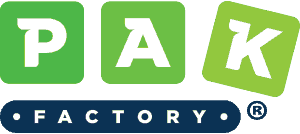

Mark Velarga
Head of Marketing at PakFactory
Part of a movement to reduce packaging waste
E-commerce packaging and package messaging are continuing to be a primary focus for 2018. We’ve seen a significant increase in e-commerce in the past few years with the convenience of both online shopping and online business ventures. Therefore, brand loyalty and trust will be the target for many of these businesses. With this competition, companies are beginning to put a lot of importance on how to effectively communicate the value of their product of each customer’s experience.
Many brands will use this to not only cut costs in their packaging but also to become part of a movement to reduce packaging waste. This is why many brands have shifted to cardboard packaging and just-in-time production.
In addition, many brands have also become more conscious of the manufacturers they partner with especially the way raw materials are being extracted, making certifications such as the FSC (Forest Stewardship Council) an important indicator of how sustainable the production activities are.
LinkedIn | Facebook | Company website

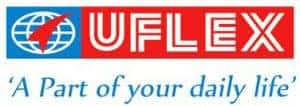
Rajesh Bhatia
Global CFO at Uflex Limited
Uflex always stays ahead of the curve
We have ushered into 2018 and it’s time for flexible packaging specialists to project trends that will shape the contours of the industry through the year. Let’s run through the top 5 trends that will rule the roost.
Light Weighted Packaging:
Amid ever-growing concern for environmental sustainability, flexible packaging which both by default and design happens to be far more energy-efficient throughout the three stages of its life-cycle; manufacturing, transportation, and disposal. Its rigid counterpart, lightweight, will be the top R&D priority for packaging engineers globally. The race to develop thinner laminate structures without compromising the overall barrier, functional properties and the strength of the packaging is going to get much tighter. This is attributable to the Pull of Conscientious Consumers, hence the Brands much as it is to the Push by Convertors catering to them. In 2018 one can hope for even higher product-to-package ratios.
Re-Configuring the Packaging for Zero Moment of Truth (ZMOT):
Today’s consumer is well-traveled, well-read, well-connected, and never too far from the smartphone. The First Moment of Truth (FMOT) which has been an important guiding factor for FMCG brands selling through the Brick and Mortar set-up till date is fast being replaced by the Zero Moment of Truth (ZMOT). During the ZMOT a consumer researches about the product online and tries to gather as much information as required for making an informed decision at the Point-of-Sale (POS). In fact, ZMOT is now being acknowledged as the very enabler for FMOT. While ZMOT is much about the quality of the products, the line between it and FMOT is getting blurred by consumers expecting real-time information about the product while shopping in the supermarket. Given the burgeoning demand, Flexible Packaging in 2018 will have to be re-configured for ZMOT, and to be able to do so, the Internet of Things (IoT) will come in handy. Intelligent features like NFC, QR, and Scan Codes on the packaging should be able to cull out all the information about the products the moment a smartphone is held up to it. Packaging engineers and researchers will not leave any stone unturned in integrating intelligent features compatible with the latest handheld devices. IoT will, in fact, be very useful for smooth logistical interventions throughout the supply chain. This will trigger disruptive innovation in the field of flexible packaging optimizing the overall value proposition for all stakeholders across the value chain.
No-Occult Packaging:
Since the inception of flexible packaging, Aluminium Foils have been used in laminate structures for providing foolproof barriers to oxygen and water vapor, saving the product packed inside from spoilage. Although, the biggest disadvantage is an opaque pack where consumers are unable to see the product packed inside. There is a growing demand for transparent barrier films that can replace aluminum foils thereby offering a sneak peek into the products at the POS for taking an informed purchase decision. Foil-replacement polymeric films are likely to be a trendsetter in 2018.
Packaging as a crusader against food waste:
Amid the growing realization that one-third of the food produced for human consumption goes to waste every year, Active Modified Atmospheric Packaging helps extend the shelf life of perishable fresh produce such as fruits, vegetables, and flowers). Also, anti-microbial packaging modifies the environment inside the food package which alters the state of the packaged food system and its headspace to enhance its quality by extension of shelf-life, enhancement of sensory qualities, and maintenance of microbial safety will see an encouraging uptrend.
Packaging that Engages and Connects:
The more the packaging engages consumers at the POS, the higher the probability the transaction will sail through! Tactile Effects on flexible packaging with the help of special printing technologies, will be a real shot in the arm for high impulse buying FMCG items. Such packaging is likely to be a buzz and happening all through 2018. Personalization and customization know no bounds. Flexible Packaging is bracing up to a whole new level where bespoke profile shapes and this is one trend that will get cracking in 2018. Picture this: Protein-shake formula packed in a sleeve splitting biceps shaped flexi-pouch makes a high-decibel pitch to fitness freak shoppers. Doesn’t it? A detergent pack profiled as a T-Shirt is potent enough to create interest among shoppers.
Being India’s largest multinational flexible packaging materials and Solution Company Uflex always stays ahead of the curve to offer the most advanced, innovative, and efficient packaging to its clients globally!”
LinkedIn | Twitter | Facebook | Company website


Brett Goldhawk
Managing Director at Ziggurat
We need innovators, inventors, and packaging technologists
I’ve seen a lot of conflicting Packaging Trend Reports already this year. Some say, minimalist, others say bold, or maybe it’s all about patterns in 2018. I prefer brands to find their path, a packaging identity that is true to their purpose, a piece of packaging that communicates the brand most succinctly to their audience, and most certainly doesn’t look to design trends to find relevance. I want the design industry to work harder in communicating our role as business consultants and not graphic designers.
I still think 2018 is too early to see any monumental change in packaging design when it comes to sustainability. You only have to visit a supermarket to see the scale of the challenge. We need innovators, inventors, and packaging technologists to find solutions that are cost-neutral to a business. If we can make it easy for C-suites to balance ethics with a profitable business, we can make a lasting change.


Marissa Puttagio
Creative Director at Eventige Media Group
Targeted differences will gain a competitive advantage
In addition to communicating brand identity and mentally stimulating consumers with color, surface textures, and sounds of the package opening, organizations will increase focus on the packaging experience of online vs. physical touch-points. Consumers examine the outer and inner packaging of products on a store shelf differently than they would examine the same product in a 3D virtual environment online. Organizations that center on the targeted differences will gain a competitive advantage with their online sales, which make a substantial financial impact on any organization expecting to exist in the next decade.
Twitter | Facebook | Company website


Nigel Ritchie
Creative Director at Echo
Packaging in the future will have new roles
We will see more attempts at designing out wasteful packaging altogether in ways that still allow brands to shine. We will also see packaging design embrace modularity, offering multiple uses and functions which means people can invest in less or more to adapt to changing needs. Branded packaging and reusable product design will merge even more as people require reusable packaging for their everyday needs.
With increasing targets to eliminate plastic packaging, as designers, we are going to have to design acceptance in an entirely new way. It is exciting because our knowledge of science, nature, and technology means that we are surrounded by the possibility to create fantastic results for sustainable futures. Imagine a future where people can create everything they need in their own homes, from food to cleaning products? Packaging in the future will have new roles around preserving and storing goods, being reusable, and having multiple uses.
LinkedIn | Twitter | Facebook | Company website


Helen Barlow
Creative Director at One Line, Design for a Difference
Packaging shouldn’t be about one use
We’re pretty excited about the augmented reality featured in the packaging! We discovered this via our print friends at GPS Colour on their Twitter feed.
Using digital elements in packaging is a great innovation that will lead to less physical waste which connects with our ethical values on sustainability.
How ‘Brand Tone of Voice’ is presented is sure to become more prominent, as businesses reap the benefits of using packaging design to connect with their customers emotionally. Packaging is a great way to add value as we discuss in more depth here.
I expect we’ll see more digital developments and perhaps the QR code will eventually have its day. Digital elements can offer consumers as much information as possible about products without the overuse of materials and resources that impact on the environment.
Of course, I’ve no doubt we will continue to see some fascinating eco developments. I’ve heard that there are plans to make it possible for black plastic food packaging to become recyclable soon and supermarkets like Waitrose have pledged to use less black plastic packaging.
Functionality is where I see things heading. Creating packaging that can transform to have a secondary function or is a beautiful keepsake empowers businesses with a key differentiator. Packaging shouldn’t be about one use: throwaway. The most exciting packaging we come across has a life of its own and is tangible in its own right. For example, our own-brand compostable fair trade packaging containing seeds that can be planted to grow wildflowers, packaging that could be framed as a work of art like this from Bonza, or this beautiful fragrance packaging that transforms into a display container.
LinkedIn | Twitter | Facebook | Company website

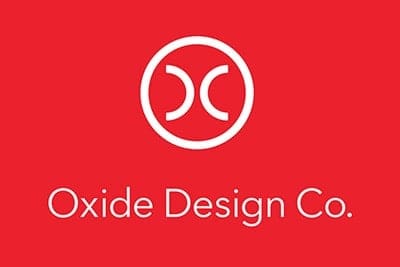
Drew Davies
Owner / Designer at Oxide Design Co.
We no longer have to sacrifice design for sustainability
We’re continuing to see a trend towards packaging being more tactile, and creating more of an experience. There’s a growing recognition that physical packaging can do certain things that can’t be replicated in the digital realm. People are taking advantage of that unique nature, and designing packaging that doesn’t just look great but also feels great — utilizing combinations of unusual forms, die-cutting, embossing, textures, and the like. Likewise, companies are more keenly recognizing the brand value of the “unboxing” experience — giving consumers something more than just a utilitarian box that contains their purchase.
I think in 2018 manufacturing advances have brought us to a point where we no longer have to sacrifice design for sustainability, so it opens up a lot of possibilities. We recently partnered with a holistic loose-leaf tea company to design their retail packaging, and environmental responsibility was a must. Without breaking the bank, we were able to source traditional gusseted bags but made out of a fully-compostable laminate. It allowed for shelf stability, bright full-color packaging, and eco-friendly sustainability.
Twitter | Facebook | Company website


Mat Bogust
Cardboard Engineer at Think Packaging
Thoughtful considerations to form, artwork & materials
Fortunately, the packaging does evolve and changes to suit both customer & client needs, which should always be considered in the initial design process. I think that pure simplicity & tangibility will be a strong trend in 2018. A key focus would be the unboxing experience. I mean, who doesn’t like perfect-fit inserts, a tear-strip, or a multi-open process to get the goods? Thoughtful considerations to form, artwork & materials are what the top brands will be focusing on this year. If they’re not, they should be.
[Sustainable Packaging] will play a vital part, especially for large volume, or fast-moving products. Customers are far more up-to-speed and knowledgeable when it comes to poorly produced, over-packaged, or non-eco substrates that package their goods. You should continually seek new materials and keeps up to speed with new innovative processes that are going on. Getting this right and mixing it with a beautiful design will not only be bang on trend but bang on point.
LinkedIn | Twitter | Facebook | Company website


Vicki O’Toole
Managing Director at JJ O Toole Ltd.
A Guide to Perfect Packaging:
Be Unique
– It can be tempting to base your packaging around that of other companies. While it is fine to take inspiration from others, it takes additional creative flair to establish your own identity and uniqueness. Stunning packaging can capture an audience and trigger emotional engagement with your brand.
Consider Your Product and Your Planet
– It is essential to think of the practicality of your packaging. But don’t forget to consider our planet when choosing your packaging and appraise the many eco-friendly solutions available. These can range from juco, & bamboo materials, to soya inks and aqueous varnishes. Using packaging originating from sustainable resources, and favoring recycled and recyclable materials, is not just helping our planet but helping the next generation of who we are custodians. Printing a recyclable logo on your packaging also ensures the end user is aware of the best way to dispose of your packaging.
Consider Your Customer
– There is a huge difference between a designer item from the
world’s leading department store and a humble pencil from a local stationery shop. Your packaging should reflect this and can be determined largely by the selling prices and nature of your products. We guide our customers through the decision-making process, offering beautiful and economical solutions, irrespective of the product to be packaged.
Stand Out From the Crowd
– A business with a strong brand will mirror it consistently in
their packaging to gain maximum brand recognition. The high streets are flooded with customers buzzing from store to store. When they make a purchase, they often carry their goods for several hours. You need to consider – are people taking notice of your packaging on the high street and do they stand out from the crowd?
The Online Experience
– Sending an online package to the other side of the world should arrive with your logo highlighted on the packaging, not that of a global courier company, so that the recipients experience your brand, not another. Online shoppers share their experiences through social media, and if your goods are delivered in beautiful packaging, your brand awareness is growing, which in turn will generate more business.
With the constant increase in online shopping comes the need for more online packaging. Choosing your packaging wisely to suit your product and brand is important. Also, the recyclability of the material you are using needs to be considered carefully.
Keep It Simple
– JJ O’Toole Ltd are expert in packaging design, creativity, and innovation. Surely this means we create lots of elaborate packaging designs for our clients, using rare and expensive materials? Wrong. We appreciate simplicity when it comes to branded packaging. The least fussy designs, when executed well, are often the most eye-catching and look the most luxurious. We only have to look at the Chanel packaging to understand how a simple, tasteful design can stand out from the crowd.
Keep-ability over Disposability
– Packaging is not just a vessel to carry a product home from the store to then be discarded and recycled. It should be so beautiful and practical that the customer doesn’t want to part with it. It could be a luxury box that is used again to store jewelry and trinkets, a bag for life that is used for gardening, or a velvet ribbon that is saved for wrapping gifts. Always consider the shelf life of your packaging and its keep-ability merits.
LinkedIn | Twitter | Facebook | Company website
Design


James Thomas
Business Development & Marketing Manager at Focus Label Machinery LTD.
Newer technology in print production
Small businesses are appearing on supermarket shelves more and more – take the Micro-Brewery and Spirit industry as one example. This has led to the brand, our customer, and the consumer having a more personal relationship with the end product. Shorter run lengths and more dedicated personalized offerings alongside digital inkjet integration into the businesses.
Also, companies are looking to purchase a Label Printer or install a Label Press in the Packaging arena within the current business. This would be either Flexo or digital production and also is used as a proofing press, especially in digital production for quick turnaround short-run production.
[Sustainable Packaging] is a very hot topic and one all in the Packaging/Label industry need to work on together. The trends from our customer base are for bespoke offerings, which include personalization, more ethical production, and biodegradable packaging materials alongside inks that offer low migration.
Newer technology in print production allows for the more varied use of materials, and enhanced products will become driven by consumers in relation to the waste they generate.
We as a supplier see this trend grow and the product to be produced more sustainably – this includes the waste packaging, the recyclability, and also the labels and labels waste that goes with the product.
LinkedIn | Twitter | Facebook | Company website


Ian Segail
General Manager of Operations at Jam&Co
Simple and minimalist design plays an important role
There is a saying amongst brand marketers, “Don’t design for brands. Design for people interacting with brands.” This essentially means designing an emotional connection between the target audience for your product and the packaging housing your product.
So what will this emotional connection look like in 2018?
There are what we call the 3 WOWs that help packaging designers to design with an emotional connection (EC).
2018 packaging designs will focus on building three key elements of WOW into your packaging design. It is the three elements of SURPRISE!; PERSONALISE and SHAREABILITY that will define engaging packaging design in 2018 and beyond.
The First WOW, “SURPRISE & Delight!”
2018 Designs will need to tap into the element of “surprise and delight!”. This means creating packaging that triggers each of our target audiences’ five senses, engaging them and grabbing their attention. The goal is to interrupt the consumer’s habitual, auto-pilot buying patterns by bringing the pack to life. Effective designers do this by using visually striking creative graphics and structural design. Both of these design’s key elements differentiate how the product stands out on the shelf (or online). The objective of surprise is to generate a, “WOW! Check this out!” response.
WOW means telling your target consumer exactly what they want to hear. It means your message can be portrayed in an array of creative ways, using photos or drawings, with typography or color, and engage either rationally or emotionally. The various ways of creating a distinction on shelves follow design trends that vary from year to year.
Creating SURPRISE & Delight with Shelf Disruption
Here are nine shelf design disruption trends that will generate SURPRISE & Delight in 2018 (See 99Designs – 2018 design trends ) will include:
Less is more. Simple and minimalist design plays an important role in helping us access our intuitive side. Simplicity is all about creating symbols and signs that your target audience will relate to. The symbol, in essence, becomes the message. Less is more means your busy, time-consumed audience will hardly need to slow down to grasp what the product inside the package is all about.
The rise of femininity. Calming pastel colors have become a natural antidote to the hyper-stimulating and explosive color world your target consumer lives in. These soft, pale pastel shades generate an aaaah relief response, tapping into our softer side.
Doodling. Doodles appearing on the packaging are a fun and happy-go-lucky way of describing what’s inside the box. Doodles take us back to our childhood making your consumer smile inside before they even touch and engage with the product.
Bold Typography – In 2018 eloquent fonts made from bright colors will drive consumer attention. A product’s name might be everything needed to send a clear and loud message about the product and all it contains. Typography is an effective method of communicating the product message.
Unique Form – Innovative and stand-out textures, shapes, eco-friendly and re-usable materials convey “surprise,” and imaginative die cuts not only reveal the “what’s inside” but also deliver strong marketing messages. For example, “Me too” products can be made distinctive by the efficient use of custom structures.
Bygone age throwback – Heritage or classic designs tap into our memories and nostalgia, a longing for simpler times when things were cared for, made by hand, and detail-oriented. Throwback calls out authenticity. Vintage conveys the story of tradition and dedication to creating long-lasting quality. Throwback design evokes memories of an older generation while piquing the interest of the NOW generation, eager to understand their history.
Power Photography – Pictures tell a story. A picture is always worth a thousand words. This explains why photography has always held a strong position when it comes to packaging design. Photography emphasizes the high quality, freshness, and authenticity of the product enabling it to sell itself. Funky photography can also be used to reach “every man” creating the feel of spontaneity, movement, and raw emotion capturing and personalizing the story of the product in unique ways. The key for 2018 is to use photography in a blend of other engaging design elements.
Vibrant Patterns and Eye-Catching Gradients. When designed effectively patterns and pattern repetition can not only encapsulate the essence of a brand but can also be used to surprise and delight on the shelf. Certain visual motifs, gradients, polka dots, stripes, triangles not only leave lots of space for creativity but at the same time they can help a brand transmit strong, clear and messages whilst breaking free from a “me too” shelf.
Masstige- Lux – In the past luxury brands have been seen to only be available to an exclusive and narrow range of high-value customers willing to invest in unique, well-crafted products with a premium price tag. Masstige is the opposite of “luxury for less.” Brands are giving a luxe twist to everyday products and charging higher than normal prices, albeit still affordable by “luxury” standards. Today’s consumers are trading up their consumption of everyday goods and developing an appetite for little luxuries they can afford. As a result, there is a growing “masstige” market where brands are positioning their products to capitalize on and appeal to a broader mass market. Packaging using special coatings and exotic substrates, holographic foil stamping, and other high-visibility enhancements like metallic inks on product packaging help to attract consumer attention. Creating a surprise on the shelf by turning the ordinary into the extraordinary -Speciality packaging can come in the form of uniquely shaped packages, experimenting with elegantly functional designs, and mixing it up.
The Second WOW, “Personalization”
The second WOW element is “personalization,” tailoring product packaging design to the individual target market or person’s name, characteristics, or preferences. When it comes to designing a product package that says: “personal,” three key elements must be considered:
-Understanding your target audience and designing specifically for them.
-Calling out directly to them from the shelf (or online) Make them feel special and unique.
-Digital printing technologies allow brands the opportunity to customize packages targeted to specific audiences.
Today’s digital printing technology enables brands to capture individuals’ attention by using personalized packaging which can feature the consumer’s name, individualized designs, and even photographs.
The Third WOW, “SHAREABILITY”
Finally, the third WOW is that of creating SHAREABILITY. Today’s brands and designers must think beyond the shopping basket. They must consider how the pack will be positioned when the consumer gets the product home. Will they share their new purchase on social media? What will the package look like on the social platforms and… is there even a way that the consumer will want to share their product purchase simply because of the unique package design?
Using the 3 Wows
There is substantial opportunity for brands to implement the 3 Wow’s to disrupt the shelf, whether it be to grow the supermarket or the hardware category. The three WOWs require planning and strategizing to ensure a successful WOW campaign that is targeted, unique & engaging, and ultimately a successful product pack.
LinkedIn | Facebook | Company website


Suzanne Ballard
Partnership Coordinator at Australian Packaging Covenant Organisation Ltd.
Transitioning to a closed-loop model for packaging
Design for recovery is set to be one of the dominating trends for the packaging sector in Australia in 2018. With significant changes in waste policy coming from China, it is more important than ever to encourage the industry to design packaging that is locally recoverable at end-of-life. Developing a product with recovery in mind is a fundamental step in the creation of circular economies. Conversely, it is just as essential to encourage the packaging sector to buy back the output of the recycling process, by promoting recycled content sourced locally. Stimulating local end-markets for recycled products through innovative procurement strategies is the other key facet of transitioning to a closed-loop model for packaging.
APCO has witnessed incredible resilience and innovation from its membership in tackling packaging sustainability issues. Working with nearly 900 members, we see that collaboration and partnerships are essential to get tangible and scalable outcomes in the sustainability space. Our role is to open the communications lines between all members of the packaging value chain to ensure we are all working towards the same objectives. To create sustainable circular economies, we need to secure the engagement and active participation of all, from designers and brand owners, through to waste collectors and recyclers.
Twitter | Facebook | Company website


Stephanie Kiens
Brand Development Manager at BrandMe
Brands need to be taking more risks in order to stand out
Clean label – the distrust in large FMCG brands has driven the demand for de-cluttering and transparency in labeling, as well as a reduction in product ingredients. Larabar has built its brand around the simplicity with which they design its packs and produce its bars.
Bold design and typography –Brands need to be taking more risks to stand out from the vast collection of graphic brands out there. BrandMe redesigned Lucozade Zero pink lemonade with precisely this challenge in mind. We aimed to change the typical semiotics of the low-calorie drinks category, to ensure that Zero stands out in the busy fixture. In a sea of the traditionally used silver and blue, we created a design that would make Lucozade Zero shout loud and proud.
Sustainable solutions (P&G’s Head & Shoulders made from recycled ocean waste plastics) to meet the growing demand from consumers, who are becoming increasingly aware of their environmental footprint. Furthermore, fruit bar brand Snact is working to combat food waste, while also being packaged in fully recyclable packaging.
Sustainable Packaging’s effect on packaging design
Brands today are under increasing pressure to reduce waste and be more sustainable while working within increasingly constrained budgets. One fascinating area of development is the use of 3D printing which gives brands access to financial effectiveness through significantly cheaper molds. This means that bespoke or personalized packaging formats will have the possibility of small batch production – as well as enabling a faster route to market.
3D printing reduces plastic waste pollution as techniques enable materials to be re-used and with thirty-three percent of consumers buying a product that is doing social or environmental good, this is an excellent opportunity for brands.
LinkedIn | Twitter | Facebook | Company website


Fred Hart
Creative Director and Partner at Interact
What will change is a brands storytelling
Over the past few years, we’ve seen a continued shift towards minimalistic and “transparent” design, reflecting the entire food industry’s ingredient cleanup. RX Bar’s ingredient-forward design (and $600M sale to Kellogg’s) highlights this perfectly. In 2018 and beyond, we’ll see the design pendulum swing towards self-expression, as consumers look to connect emotionally with their brands. PepsiCo’s LIFEWTR, vintage-turned-cool LaCroix, and ice-cream darling Halo Top all use expressionistic design to inspire people, drive engaging personalities and tell unique stories beyond just the “what” of the product. Color, pattern, and evocative typography will come to prominence more than ever.
The leaders of sustainable packaging are doing a phenomenal job at creating substrates and materials that are compostable, recyclable, or biodegradable while keeping commercial viability and application in mind. Likewise, water and plant-based inks continue to improve in depth. All of this is to say that, little will be felt on the design side of things. What will change is a brand’s storytelling around its considerate and conscious choices of sustainable packaging. More and more brands will begin to weave those narratives into the back, and even front of packaging communications, to take credit for their efforts and capture consumer sentiments around the environment.”
Interact is a branding and packaging design firm, strategically located in Boulder CO, positioned at the epicenter of the natural foods movement. We work exclusively with food and beverage brands and help shape progressive, innovative, and forward-thinking companies with millennial-led, entrepreneurial-minded leadership.

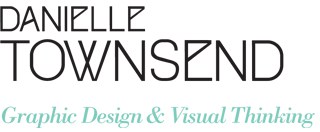
Danielle Townsend
Creative Director at Danielle Townsend Design
Good design in relation to sustainability
Regarding packaging design, there are some exciting advancements in the use of augmented reality in conjunction with tailor-made brand experiences. Interactivity and consumer engagement is a space that looks like it will be the headline for 2018.
Designers have an increasing role to play in the advocacy of sound design about sustainability. Designers are there to advise clients and brands on what are the most sustainable practices to engage with regarding packaging. This means designers need to become a more significant part of the conversation specifically where consumers are looking for minimal waste on the products they purchase.
LinkedIn | Twitter | Company website
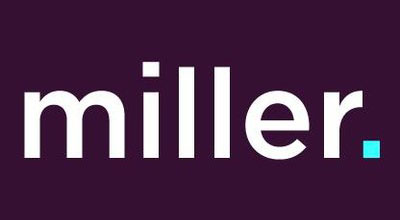
Yael Miller
Partner at Miller
Packaging reduction doesn’t need to mean a lower perceived value
The design trends we’re seeing are reducing packaging to essentials – both in materials, format, and design approach. For example, pouch-based packaging is extending into every category including toys (which have traditionally been dominated by very over-packaged boxes with plastic inserts). This is not across-the-board, but where we do so ‘reduced packaging’ it’s seen as an upgrade rather than a downgrade. Design-wise, a ‘quieter’ tone is becoming a more favored approach. Case-in-point is Chobani’s recently-updated packaging with a smaller footprint for the logo, stable serif typography, and less over-the-top color use with matte finishes.
Sustainability will shift from an emphasis on what material is used (recycled, alternative fibers, etc.) to slimmed-down packaging (less material, better material choices). For example, something that would have been packaged in a box with a tray insert might be packaged in a simple reseal zipper pouch. Although plastic, it has established waste recycling streams in most communities and takes up less space in landfills where some units may end up. The net benefit is more sustainable, while also saving money across the board. Packaging reduction doesn’t need to mean a lower perceived value to consumers. With careful well-considered material selections, finishes, and thoughtful design, a branded package could be elevated without being densely packaged.
Twitter | Facebook | Company website

Jessie Vickery
Founder and Creative Director at Pattern People
Helping your product stand out in the marketplace
Botanical Garden
“With the collective enthusiasm for plants hitting a fever pitch, it’s no surprise to see this trend translate itself into the packaging world. Lush leaves and floral blooms create stunning visuals that are worthy of sitting on your shelf for much longer than the life of the product.
Shine On
Holographic foils and iridescent metallic finishes elevate packaging to the next level and create a feeling of preciousness. Just like a magpie, the consumer will be attracted to the dimensionality and shine, helping your product stand out in the marketplace.
Collage Class
Colorful shapes, whether cut or torn, communicate a feeling of play and optimism. Whimsical in form, these elements bring a youthful vigor to the package they adorn.
Block Party
Say it loud and proud with bold blocks of color. Minimal branding lets the palette take center stage. Mix and match hues on various packaging to build a larger visual footprint in the market.
Twitter | Facebook | Company website

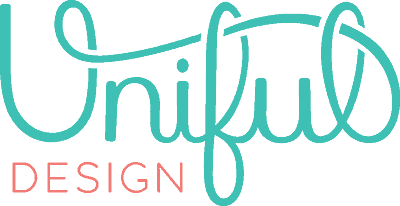
Alycia Moffatt
Graphic Designer at Uniful Design
Looking at their packaging process as a whole
Holographic effects seem to be an emerging trend inspired by 90’s fashion, which has started spilling over into packaging design. Brands are also exploring ways they can connect directly with their customer through partnerships and personalization. This means we will be seeing more co-branded packaging and niche products that are personalized for individuals. For example, some beauty companies are offering customized products based on each customer’s specific concerns, complete with personalized product labels.
Today’s consumers are interested in the story behind the products they use. This means more brands are looking at the entire lifecycle of their product and the sustainability of their packaging materials and processes. In previous years, brands may have focused on just one aspect of sustainable packaging such as reducing the amount of overall packaging or using easily recyclable materials. In 2018 companies will be looking at their packaging processes as a whole, such as sustainable printing techniques, refills, and bulk purchasing options, as well as partnerships with eco-friendly vendors and initiatives.


Jonathan Hou
Director of Technology at GlobalVision
Having smart assistants helping you in your day to day
For 2018, the trends that we’re seeing in consumer technologies should start making their way into packaging software. The technology buzzwords over the past year have been “AI” and “Big Data” thanks to products like Google Assistant, Amazon Alexa, and Microsoft Cortana. Having smart assistants helping you in your day-to-day can also translate into the package design and execution processes.
The Packaging software you use in your design and artwork process should be smart-enabled. Here’s how AI can benefit packaging design and development:
Allow automatic content pushing from source files all the way to the artwork
Ability to search images in your Digital Asset Management systems based on image context (not metadata) and other types of data like colors, and objects in the image and provide automatic classification to save time finding the right photos for your packaging artwork
Automatically perform tasks like creating step and repeat files, or quality checks in digital and on press.
Suggest how to correct errors based on machine learning
At the same time, Big Data is another trend where capturing data about the packaging you produce can help optimize processes and make sure you’re not creating additional waste and reducing potential reprints. Here are some ideas on how Big Data can come into play for packaging:
Automatically pulling all the relevant information together that you’re interested in for a specific package like a Facebook feed. Imagine being able to pull in all related content for a specific packaging design you are working on including relevant content, images, regulations, dimensions, and brands.
Capturing data and analytics and providing recommendations. For example, you could capture the criticality and the number of errors from packaging and print suppliers to help identify areas of improvement or pick top performers in your supply chain. Helping find the source of errors will help in reducing reprints.
Smart labels and packaging allow consumers to connect to brands and to pull all the data related to a product they are looking to purchase to find out information on nutrition, how the product is made regarding sustainability, and ingredients – all paperless.
LinkedIn | Company website | Contact us for a Demo
These experts have shown exactly where they believe sustainable packaging trends will develop in 2018 and how their companies will grow to thrive in this eco-friendly market. In this consumer-driven era, we must ask ourselves how will these trends affect our business and what steps will we take in 2018 to promote and maintain our claims of sustainability? Where will it go from here?
_________________________________________________________________________________________
Get your complete guide to meeting FDA labeling requirements here!
See how some of the world’s top pharma companies have cracked the efficiency code with automation.

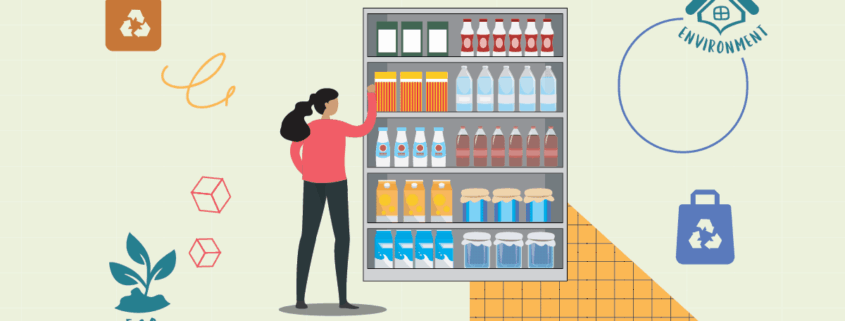

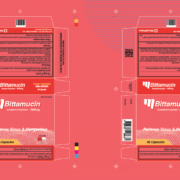
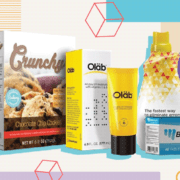
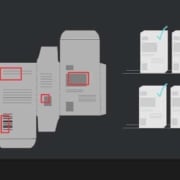
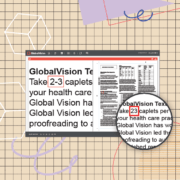
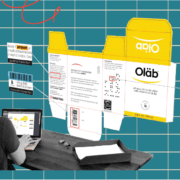


A round of applause for your article post.Much thanks again. Really Great.